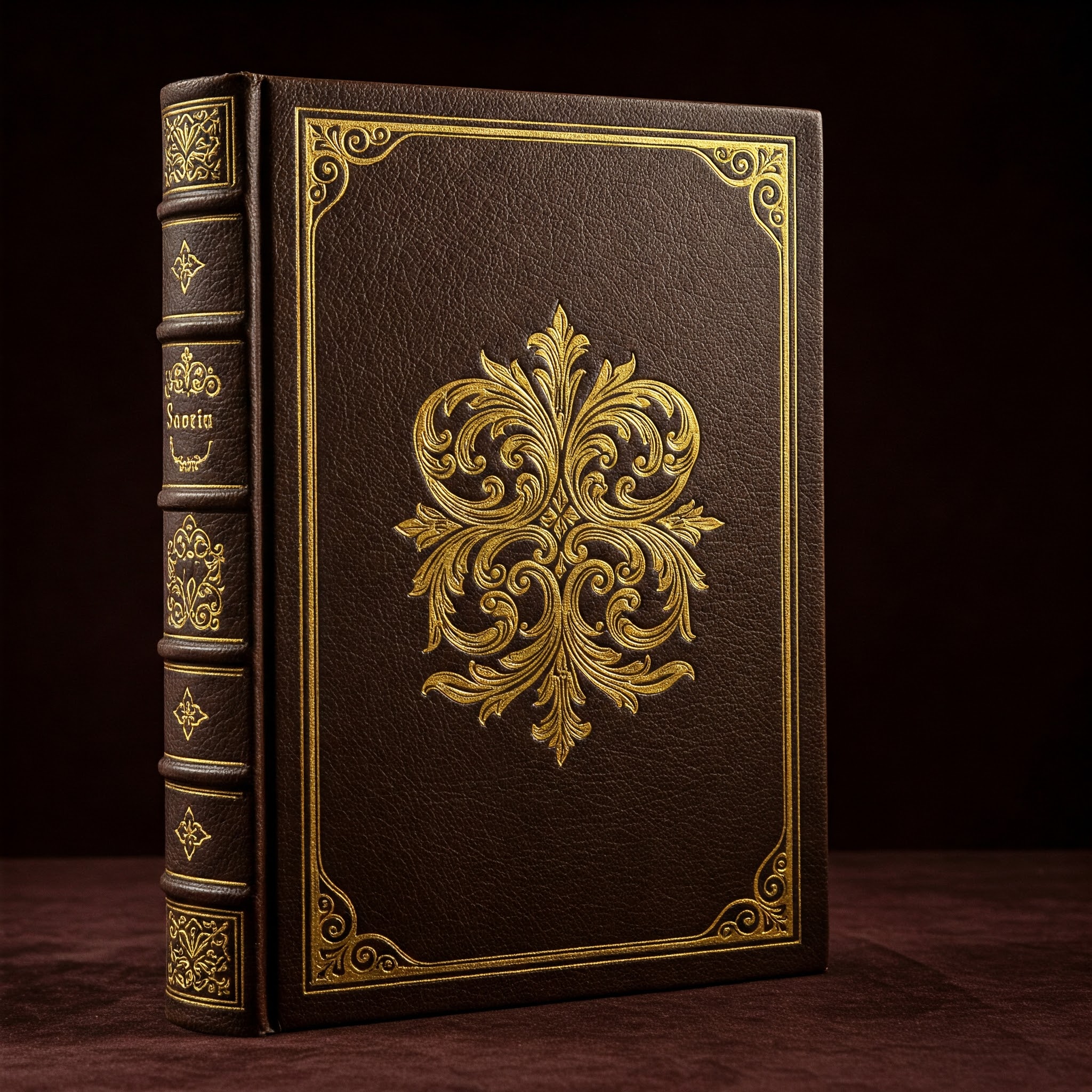Binding the Past: Traditional Bookbinding Techniques in a Digital World
"People crave the tangible. In a world saturated with the ephemeral, a hand-bound book is an anchor, an artifact of human touch and time." - Master Bookbinder
The Mathematical Beauty of Bookbinding
Traditional bookbinding follows precise mathematical principles that have been refined over centuries. The golden ratio (φ ≈ 1.618) often appears in classical book proportions:
$\(\phi = \frac{1 + \sqrt{5}}{2} \approx 1.618\)$
Book formats typically follow geometric progressions. The traditional folio, quarto, and octavo sizes can be expressed as:
$\(A_{folio} = \frac{A_{sheet}}{2}\)$ $\(A_{quarto} = \frac{A_{sheet}}{4}\)$ $\(A_{octavo} = \frac{A_{sheet}}{8}\)$
The distribution of tension in the binding structure can be modeled as:
$\(T(x) = T_0 e^{-\mu x}\)$
Where T₀ is the initial tension, μ is the binding friction coefficient, and x is the distance from the spine.
The Bookbinding Process Visualized
This visualization demonstrates the sequential yet interconnected steps in creating a hand-bound book.
Comparing Binding Methods Through Time
| Binding Method | Historical Period | Materials | Strength | Longevity | Modern Applications |
|---|---|---|---|---|---|
| Coptic | 2nd century CE | Leather, linen thread | High | Centuries | Journals, artists' books |
| Medieval Monastic | 8th-15th century | Vellum, oak boards | Very High | 1000+ years | Preservation bindings |
| Renaissance | 15th-17th century | Calf leather, gold tooling | High | 500+ years | Luxury editions |
| Case Binding | 19th century-present | Cloth, binder board | Moderate | 100+ years | Most hardcovers |
| Perfect Binding | 20th century-present | Glue, paper | Low | 20-50 years | Paperbacks |
| Japanese Stab | Ancient-present | Silk thread, paper | Moderate | Centuries | Photo albums, portfolios |
The Science Behind Material Interactions
The durability and behavior of a bound book can be modeled through mathematical principles. The stress-strain relationship in the spine during opening can be expressed as:
$\(\sigma = E\epsilon + \eta\frac{d\epsilon}{dt}\)$
Where σ is stress, E is the elastic modulus of materials, ε is strain, and η is viscosity parameter representing time-dependent behavior.
The probability of binding failure increases with usage cycles and environmental factors:
$\(P(failure) = 1 - e^{-\lambda t}\)$
Where λ represents the failure rate and t is time.
Decision Trees in Bookbinding
The Historical Evolution of Bookbinding
Mathematical Models of Material Degradation
The conservation of bound books relies on understanding degradation processes. Paper deterioration follows complex chemical kinetics:
$\(\frac{dC}{dt} = -k \cdot C^n \cdot f(T, RH)\)$
Where C is the concentration of cellulose polymers, k is the rate constant, n is reaction order, and f(T, RH) is a function of temperature and relative humidity.
The pH changes in aging paper can be modeled as:
$\(pH(t) = pH_0 - \alpha \cdot \ln(1 + \beta t)\)$
Where pH₀ is initial pH, and α and β are constants dependent on paper composition.
Bookbinding as a Complex System
The Chemistry of Bookbinding Materials
| Material | Chemical Composition | Aging Process | Preservation Method | Environmental Sensitivity |
|---|---|---|---|---|
| Paper | Cellulose fibers | Acid hydrolysis, oxidation | Deacidification, cool storage | High (humidity, light, pollutants) |
| Leather | Collagen protein | Tannin degradation, red rot | pH-balanced conditioning | High (humidity fluctuations) |
| Linen Thread | Cellulose fibers (flax) | Minimal degradation | Minimal intervention needed | Low |
| Animal Glue | Protein (collagen) | Brittleness, biological attack | Humidity control | High (humidity, temperature) |
| PVA Adhesive | Polyvinyl acetate polymer | Minimal degradation | Minimal intervention needed | Low |
| Bookcloth | Cotton + starch/acrylic | Staining, wear | Gentle cleaning, reinforcement | Moderate |
The chemical stability of different adhesives can be quantified through their glass transition temperature (Tg):
$\(T_g = \sum_{i} w_i T_{g,i}\)$
Where w_i is the weight fraction of component i and T_{g,i} is its glass transition temperature.
Looking to the Future
As traditional bookbinding continues to evolve, it merges historical techniques with modern innovations in materials and design. The intersection of craft tradition with contemporary needs creates a dynamic space for exploration and preservation.
"The principal mark of genius is not perfection but originality, the opening of new frontiers." — Arthur Koestler
This article explores the rich technical heritage of bookbinding while emphasizing its continued relevance in our digital age. The mathematical principles and structured systems that have guided bookbinders for centuries continue to inform both preservation efforts and creative innovations.
